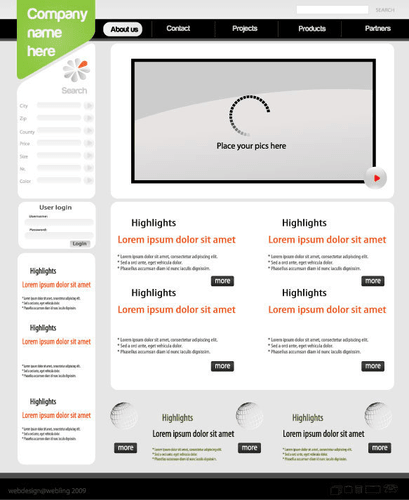
A shift in the demand curve occurs when there is a change in the quantity demanded at each price point, assuming all other factors remain constant. This means that the entire demand curve shifts either to the right (increase in demand) or to the left (decrease in demand). Those limits are a combined limit across both Roth and traditional IRA accounts; if you have both, you cannot contribute more than the maximum between them. Pamela is a firm believer in financial education and closing the generational wealth gap. She got into journalism to tell the kind of stories that change the world, in big and small ways.
How is Net Income Connected to the Balance Sheet?
Revenue is the income a business generates from selling goods or providing services. In short, it’s all of the money your business has brought in regardless of any payments it has had to make along the way. Aaron would compute his annual net income by subtracting total expenses ($67,500) from total income.
Business Class
- Additionally, the company had to pay $5,000 in interest on its outstanding loan and $10,000 in taxes.
- Balancing the potential for higher efficiency and commercial advantage against the stability and proven effectiveness of Option 1 is crucial.
- Perhaps you can find cheaper rates for rent, utilities and insurance, or negotiate better deals with your suppliers.
- To report annual earnings, you will need to submit a version of Form 1040 to the IRS.
- The maximum payment period on purchases is 54 calendar days and is obtained only if you spend on the first day of the new statement period and repay the balance in full on the due date.
- A pay stub, on the other hand, has no monetary value and is simply an explanatory document.
- As stated above, the difference between taxable income and income tax is the individual’s NI, but this number is not noted on individual tax forms.
To calculate net profit margin, take your net profit and divide it by your total revenue, or the amount of money generated from sales before any expenses are removed. The resulting figure is then expressed as a percentage, showing how much of every pound earned translates into profit. Yes, net income is the amount of money left over after subtracting taxes, cost of goods sold, interest net income on debt and total expenses. Sometimes referred to as net sales, revenue is the total amount of money your company earns from selling goods and services in a given time. In addition to revenue generated from your business’s core activities, you may also have non-operating revenue. Operating income represents the income your business generates after any operating expenses.

How is Net Income different than Profit?

Learn the right way to pay yourself, depending on your business structure. Income statements—and other financial statements—are built from your monthly books. Net income is one of the most important line items on an income statement.
- Using similar calculations as in scenario (b), but with 12,000 units of SilPol produced and sold.
- For this reason, financial analysts go to great lengths to undo all of the accounting principles and arrive at cash flow for valuing a company.
- Businesses start with their gross income, which includes total revenue from sales and other income sources.
- Net income is your company’s total profits after deducting all business expenses.
- This is one of the easiest ways to increase net profit margin and it doesn’t usually cost your business anything extra, says Heelan.
- Understanding the difference between gross and net income ensures you have a clear view of your business’s profitability and sustainability.
You’ll usually find your business’ COGS listed near the top of your income statement, just under revenues. Business owners and investors can review the net income from time to time to determine if the business is increasing, decreasing, or maintaining the same level. They can compare the net income margins of other businesses to see how well their business is performing among their competitors.
- In the field of International Human Resource Management (IHRM), retaining expatriates is a crucial aspect for multinational companies (MNCs) operating in a globalized business environment.
- An up-to-date income statement is just one of the financial reports small business owners gain access to through Bench.
- The best place to keep an emergency fund is somewhere stable and accessible, like a savings account.
- Gross income, operating income, and net income are the three most popular ways to measure the profitability of a company, and they’re all related too.
- The net income reported on Apple’s income statement was $94,680 million, confirming our calculation is, in fact, correct.
Key Differences Between Gross and Net Income
This paper aims to explore the reasons why expatriates quit and provide strategies for effectively retaining them. The fixed manufacturing overhead needs to be allocated based on the number of units produced. Since the data provided doesn’t specify the number of units produced, we cannot determine the exact unit product cost using absorption costing.
This includes all sources of income such as salary, wages, tips, commissions, interest, dividends, rental income, and alimony. It represents the full amount of money earned, providing a broad view of your financial inflow. When a company has more revenue than expenses, it has a positive net income. But if there are more expenses than revenue, then that’s a negative net income or net loss.
Both gross income and net income can measure profitability, but net income provides the clearest picture. Net income gives you a better view of the financial health of your company since it represents the profit of the business after deducting expenses. Your net income is typically found on the last line of your company’s income statement, which is why it’s often referred to as your bottom line.
Improving net profit margin
To calculate net income for your business, you are going to add your expenses to the total cost of sales. Then, you are going to subtract that number from your overall revenue. Net income includes the cost of goods sold, administrative expenses and operating expenses.
State and local tax withholding
Ultimately, the final decision should be based on a careful evaluation of the relative merits, risks, and alignment with the company’s long-term objectives. Balancing the potential for higher efficiency and commercial advantage against the stability and proven effectiveness of Option 1 is crucial. However, Option 2, which utilizes a radical new process, presents the potential for much higher efficiency and profitability. It offers the opportunity to gain a significant commercial advantage over competitors by being the first to adopt such a groundbreaking technology. Which of the following best illustrates a shift in the demand curve? All other costs are assumed to remain constant, except for the additional marketing cost of $428,000 for advertising.
